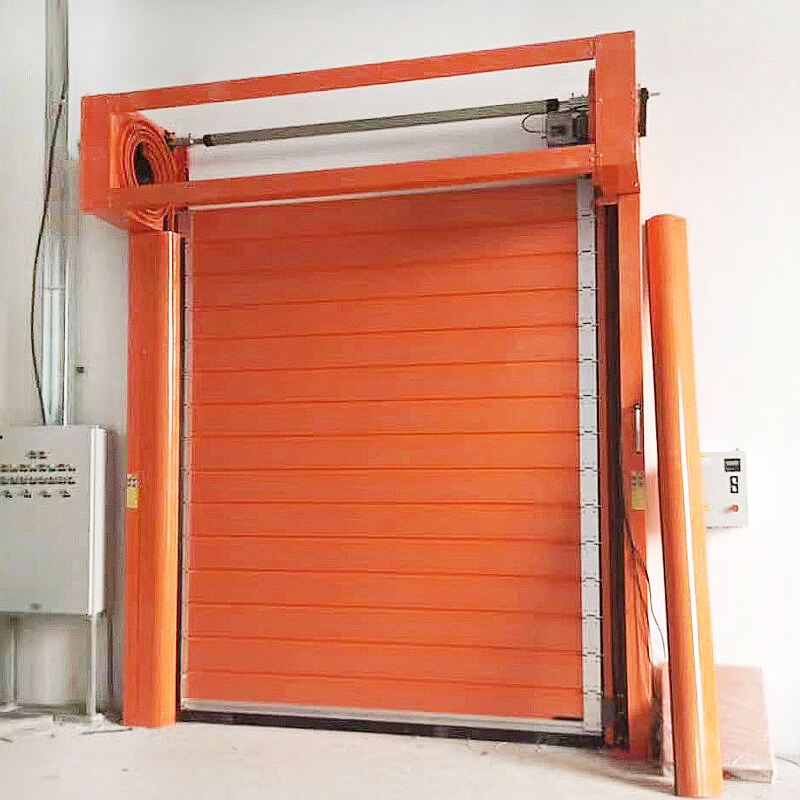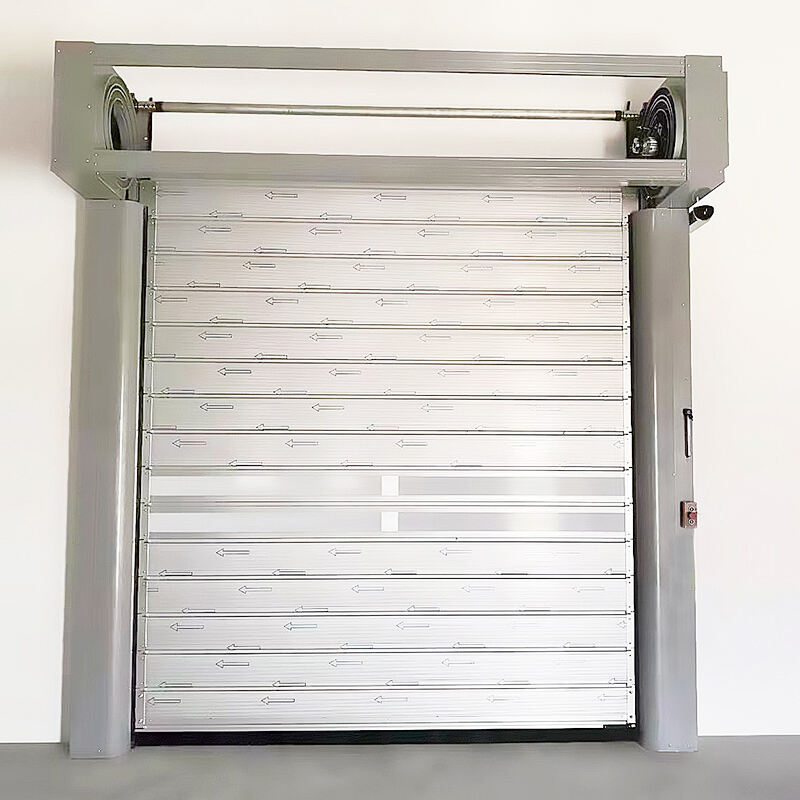Industrial Efficiency Through Fast Door Systems
Industrial facilities increasingly adopt High Speed Doors to streamline movement, protect environments and improve operational efficiency. Why are these systems becoming the default choice for so many sectors? High Speed Doors offer dramatic cycle speeds, tight sealing, and smart controls that reduce energy loss, prevent contamination and accelerate throughput. In logistics hubs, manufacturing floors and cold storage areas, High Speed Doors minimize exposure to external conditions while enabling rapid, repeated opening and closing that traditional doors cannot sustain. They are engineered for high duty cycles and for coordination with building systems, which helps facilities reduce runtime on HVAC and refrigeration equipment. When chosen and installed correctly, High Speed Doors become an integral part of process design rather than an afterthought, delivering reliability and measurable operational improvements across shifts.
Primary Applications in Logistics and Warehousing
Distribution Centers and Fulfillment Hubs
Distribution centers rely on rapid material flow to meet tight delivery windows, and High Speed Doors are key enablers. These doors reduce waiting times for forklifts and trucks, help maintain internal climate zones, and lower the risk of cross contamination between areas. Integrating High Speed Doors with dock management and traffic control systems improves safety and throughput while reducing energy losses from prolonged open doors. Over the course of a day, the cumulative time saved at multiple docks becomes a significant productivity advantage.
Cold Storage and Temperature-Controlled Logistics
Cold chain operations require doors that open and close quickly to avoid temperature stratification. High Speed Doors with insulated curtains and effective seals preserve setpoints in freezers and chillers. By shortening transition times between loading and storage, these doors protect perishable goods and reduce compressor runtime, which saves energy and prolongs refrigeration equipment life. Reliable High Speed Doors also reduce ice buildup and maintenance needs at cold storage thresholds.

Manufacturing and Production Uses
Assembly Lines and Throughput Optimization
On production lines, even small delays cause bottlenecks. High Speed Doors reduce the time workers and conveyors wait, keeping takt time steady and supporting lean manufacturing. Their fast operation and corrosion-resistant components make them suitable for harsh production environments where frequent access is required. Synchronizing High Speed Doors with line controls prevents unnecessary stops and maintains product flow, contributing to predictable output rates.
Contamination Control and Clean Areas
Many manufacturing processes require strict separation between stages to prevent particulate or microbial contamination. High Speed Doors provide a quick barrier that supports positive or negative pressure regimes and minimizes air exchange. In clean-in-place or aseptic operations, these doors help maintain certifications and reduce the need for additional airlock infrastructure. Choosing High Speed Doors with suitable materials and sealing systems is essential to meet contamination control targets while keeping operational complexity low.
Retail, Automotive and Service Sectors
Showrooms and Service Bays
Automotive showrooms and service centers benefit from the sleek appearance and rapid operation of High Speed Doors. These systems enable quick vehicle access while improving customer flow and minimizing drafts. Their modern profiles also enhance aesthetic appeal without sacrificing performance. In service bays, High Speed Doors speed vehicle turnover while improving indoor comfort for staff and customers alike.
Fast-Moving Retail Backrooms
Retail backrooms handling fast-moving stock need doors that match the pace. High Speed Doors keep stock transfer moving, reduce exposure to outdoor temperatures, and support loss-prevention strategies by controlling access points. Their rapid cycles help minimize door-open times during peak periods, improving overall back-of-house efficiency and protecting product quality.
Healthcare, Pharmaceuticals and Laboratories
Sterile Environments and Airflow Control
Hospitals and labs use High Speed Doors to maintain sterile corridors and prevent cross-contamination. Rapid sealing and integration with HVAC controls ensure stable environmental conditions critical for patient safety and research integrity. High Speed Doors reduce the reliance on multiple vestibules and simplify corridor layouts while preserving air cleanliness.
Pharma Manufacturing and GMP
Pharmaceutical production requires validated processes and strict environmental control. High Speed Doors help meet GMP requirements by limiting airflow disturbances and enabling clean-room transitions with minimal human intervention. Selecting High Speed Doors with documented testing and cleanroom compatibility supports regulatory compliance and process reliability, reducing the cost and complexity of validation.
Agriculture, Food Processing and Cold Chains
Processing Lines and Hygiene
Food processing facilities need frequent access for personnel and equipment while maintaining hygiene. High Speed Doors reduce the window for pest entry, minimize airborne contaminants, and support washdown cycles with corrosion-resistant materials. Their quick cycles reduce exposure during loading and improve line sanitation routines, which supports food safety programs and audit readiness.
Cold Storage Interfaces
At the interface between receiving docks and cold stores, High Speed Doors prevent thermal shocks to stored product and reduce frost buildup on equipment. Their rapid cycles and tight seals are essential for efficient cold chain management. Durable High Speed Doors also withstand repeated impacts from pallet trucks and maintain integrity under heavy use, lowering maintenance costs and downtime.
Energy, Utilities and Mining
Equipment Rooms and Access Control
Power plants and utility substations require controlled access to sensitive equipment. High Speed Doors provide fast, secure passages for personnel and mobile equipment while preserving environmental isolation for critical infrastructure. Doors with fire-resistant or conductive materials can be specified where necessary to meet site requirements and protect mission-critical assets.
Hazardous Area Containment
In mining and chemical operations, doors must sometimes act as barriers against dust, fumes or flame. Specialized High Speed Doors with appropriate materials and certifications can improve safety and regulatory compliance in these demanding environments. Robust design reduces dust ingress and protects downstream processes from contamination, supporting continuous operation even under challenging conditions.
Selection Criteria and Integration
Speed, Cycle Life and Durability
Selecting the right door involves balancing opening speed, duty rating and materials. High Speed Doors must handle thousands or millions of cycles per year, which requires robust motors, bearings and curtain materials designed for repeated operation. Consider environment, expected impacts and maintenance access when choosing components to maximize service life and achieve consistent performance.
Safety, Controls and Automation
Modern High Speed Doors include safety edges, light curtains and smart controls to prevent collisions and coordinate with forklifts, conveyors and BMS. Compatibility with PLCs and open protocols ensures seamless integration into factory automation. Advanced diagnostics and remote monitoring reduce downtime and support predictive maintenance strategies that keep production flowing.
Operational Benefits and ROI
Energy Savings and Environmental Control
Reducing the time an opening is exposed to ambient air yields measurable energy savings. High Speed Doors limit infiltration and preserve conditioned space, lowering HVAC loads and improving temperature consistency for process-sensitive operations. In many facilities the payback from reduced energy and improved process stability justifies investment in high-performance doors, especially where many cycles occur daily.
Throughput, Downtime Reduction and Productivity
By minimizing delays at crossings and loading points, High Speed Doors increase throughput and reduce labor idle time. Faster cycles also decrease vehicle idling inside docks, improving safety and reducing emissions. The resulting productivity gains often compound across shifts and multiple openings to deliver clear operational ROI.
Installation, Maintenance and Compliance
Serviceability and Spare Parts
Planned maintenance and quick access to spare parts are essential. High Speed Doors designed with modular components simplify field repairs and keep downtime low. Establishing service contracts ensures predictable upkeep, and stocking critical spares reduces response times for urgent repairs.
Standards and Certifications
Compliance with industrial standards for fire rating, explosion protection or hygiene may be required. Specifying High Speed Doors with the correct certifications helps avoid costly retrofits and ensures regulatory alignment. Verify third-party testing and request compliance documentation during procurement to reduce implementation risk.
Future Trends and Innovations
IoT Integration and Predictive Maintenance
The next generation of High Speed Doors are increasingly connected, providing real-time telemetry on cycle counts, motor health and curtain condition. IoT-enabled doors feed data into maintenance platforms, allowing predictive parts replacement and reducing unscheduled downtime. This connectivity also enables remote diagnostics and firmware updates, making High Speed Doors smarter and easier to manage at scale.
Advanced Materials and Energy-Saving Designs
Material science improvements and better seals are creating doors that are lighter, stronger and offer improved thermal performance. High Speed Doors now incorporate aerodynamically profiled curtains, low-loss seals and hybrid insulation strategies that further reduce air exchange. These advancements extend the benefits of high-speed operation into lower life-cycle energy use and reduced total cost of ownership.
Planning and Implementation Steps
Site Assessment and Specification
Begin with a detailed site survey to document opening dimensions, traffic patterns and environmental constraints. An informed specification ensures the selected High Speed Doors meet duty, safety and certification needs while fitting existing structural and service conditions. This prevents mismatches that can lead to early failures or unexpected retrofit costs.
Phased Installation and Commissioning
Phased rollouts and thorough commissioning minimize disruption. Testing door integration with conveyors, dock software and building management systems during commissioning ensures smooth operation and validates performance targets before full production use. Proper commissioning also trains staff on safe operation and basic troubleshooting.
FAQ
What Are Typical Speeds And Duty Cycles For High Speed Doors?
High Speed Doors commonly operate at opening speeds from 0.5 to 2.5 meters per second or more, with duty cycles specified for the application. Heavy-use logistics doors might be rated for continuous operation and millions of cycles, while lower-duty doors suit occasional access. Verify manufacturer duty ratings and match them to expected traffic patterns.
Can High Speed Doors Improve Energy Efficiency In Industrial Settings?
Yes. By reducing the time that large openings stay open, High Speed Doors limit air exchange and help maintain temperature and humidity setpoints. This reduces HVAC load and can result in significant energy savings when deployed across multiple openings. Pairing doors with synchronized dock or vestibule controls maximizes these savings.
What Safety Features Should I Expect In Industrial Doors?
Expect presence detection such as photocells, safety edges, motion sensors, emergency stop functions and manual overrides. Advanced systems integrate with access control and vehicle detection systems to prevent collisions and automate safe operation. Regular safety audits and testing keep systems compliant and reduce incident risk.
How Do I Choose The Right High Speed Door For My Facility?
Assess the application: required speed, environmental control, cycle life, size and required certifications. Engage with suppliers to verify materials, testing, and compatibility with existing automation before committing to a specification. Consider total cost of ownership including maintenance and energy impacts rather than lowest purchase price.
Table of Contents
- Industrial Efficiency Through Fast Door Systems
- Primary Applications in Logistics and Warehousing
- Manufacturing and Production Uses
- Retail, Automotive and Service Sectors
- Healthcare, Pharmaceuticals and Laboratories
- Agriculture, Food Processing and Cold Chains
- Energy, Utilities and Mining
- Selection Criteria and Integration
- Operational Benefits and ROI
- Installation, Maintenance and Compliance
- Future Trends and Innovations
- Planning and Implementation Steps
- FAQ

